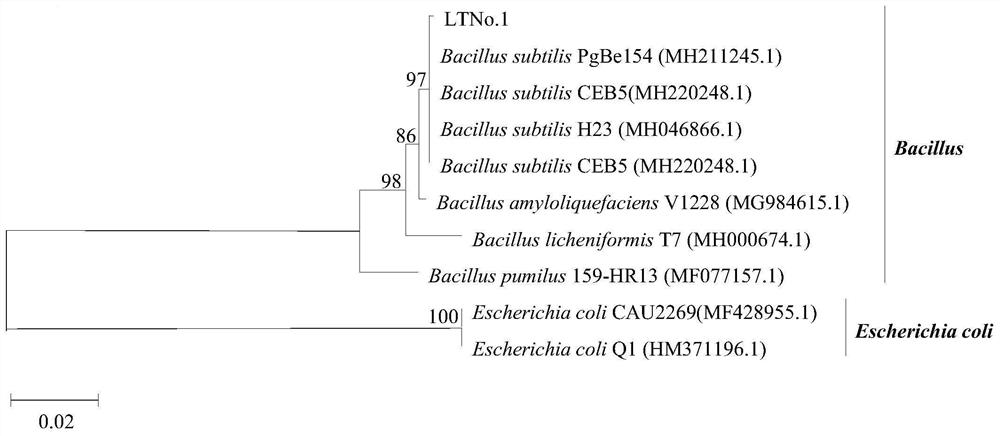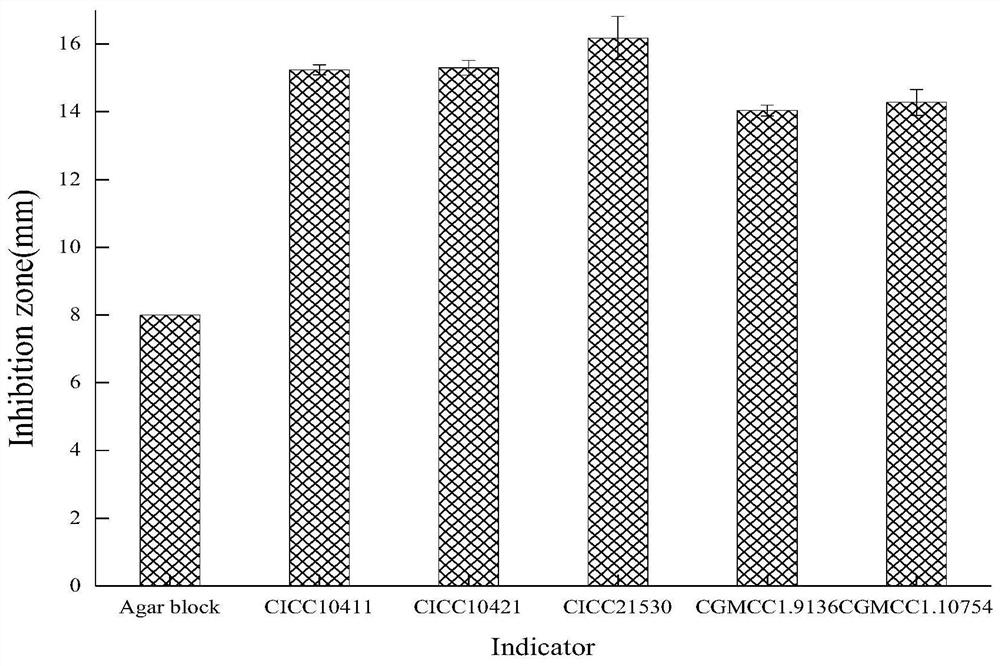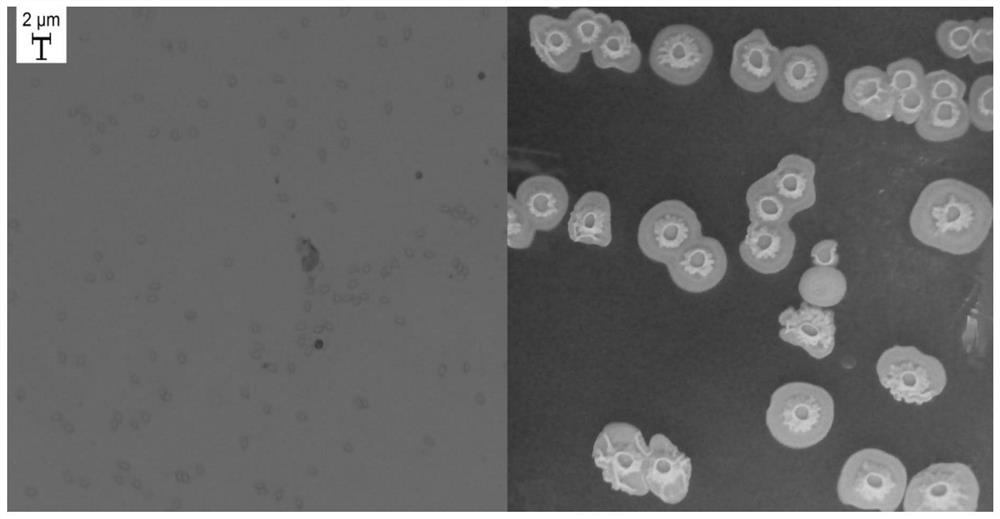A kind of bacterial strain, bacterial agent and application
A technology of bacterial strains and bacterial agents, applied in the field of microorganisms, can solve problems such as difficulty in achieving probiotic effects, short shelf life, and low number of viable bacteria in products
- Summary
- Abstract
- Description
- Claims
- Application Information
AI Technical Summary
Problems solved by technology
Method used
Image
Examples
Embodiment 1
[0022] Embodiment 1 (isolation and screening bacterial strain)
[0023] A free-range healthy black-bone chicken was purchased from a farmer in Baitan Village, Xigobi Town, Shawan County, Tacheng Prefecture, Xinjiang. It was fasted for 12 hours (drinking water freely during the period) and then sacrificed by venous bloodletting. Evenly, weigh 10.0g and dissolve in 90mL sterile saline, shake evenly, and bathe in 85°C water bath for 30min; adopt gradient dilution coating method on LB solid medium, and incubate at 37°C for 24h. Preliminary screening was carried out based on phenotypic differences such as colony color, size, and shape. After continuous transfer and streak culture for 3 times, transfer to an inclined test tube and refrigerate at 4°C; pick a single colony and inoculate it into a liquid medium at 37°C and 150r / min Shake enrichment for 18h, centrifuge at 5600r / min for 10min, discard the supernatant, add fresh medium to resuspend, supplement 25% sterilized glycerol and ...
Embodiment 2
[0024] Embodiment 2 (identify bacteriostasis)
[0025] Detect the bacteriostasis of the isolated strains: adjust the concentration of the enriched bacterial solution to (2.0-2.5)×10 8 CFU / mL, pipette 150 μL on LB solid medium and evenly spread it, and incubate it upside down at 37°C for 24 hours; use a puncher to punch out a 6mm-diameter bacterial cake for use; spread the indicator bacteria on the corresponding medium at the same concentration, Place 3 copies of the bacteria cakes on the surface of the indicator bacteria equidistantly, and use LB agar block as a blank control, incubate at a suitable temperature for 18 hours, and measure the diameter of the inhibition zone; the inhibition diameter of strain CCTCC LTNo.1 is shown in figure 2 ; indicator bacteria Escherichia coli EPEC O127:K63CICC 10411 (enteropathogenic Escherichia coli), Escherichiacoli ETEC O78:K80CICC 10421 (enterotoxigenic Escherichia coli), Escherichia coli EHEC O157:H7 CICC21530 (enteropathogenic Escheric...
Embodiment 3
[0026] Embodiment 3 (identification bacterial strain)
[0027] 1. Colony and cell morphology: Streak the strain LTNo.1 on LB agar medium, culture at 37°C for 24 hours, the colony shape is irregular, the edge is off-white and smooth, the middle part is white and raised, and the diameter of the colony is 3-5mm; Gram staining was positive, the cells were short rod-shaped, and the colonies and cell shapes were seen in image 3 .
[0028] 2. Physiological and biochemical identification: Physiological and biochemical identification of strain LTNo.1 was carried out referring to the method in the "Common Bacterial System Identification Manual", and the results are shown in Table 1.
[0029] Table 1. Physiological and biochemical characteristics of strain LTNo.1
[0030]
[0031] Note: "+": Positive, "-": Negative.
[0032] 3. Molecular identification: the molecular biology method of 16S rRNA gene sequencing was used to identify the above-mentioned bacterial strain; the 16S rRNA ...
PUM
| Property | Measurement | Unit |
|---|---|---|
| diameter | aaaaa | aaaaa |
Abstract
Description
Claims
Application Information
 Login to View More
Login to View More - R&D
- Intellectual Property
- Life Sciences
- Materials
- Tech Scout
- Unparalleled Data Quality
- Higher Quality Content
- 60% Fewer Hallucinations
Browse by: Latest US Patents, China's latest patents, Technical Efficacy Thesaurus, Application Domain, Technology Topic, Popular Technical Reports.
© 2025 PatSnap. All rights reserved.Legal|Privacy policy|Modern Slavery Act Transparency Statement|Sitemap|About US| Contact US: help@patsnap.com



